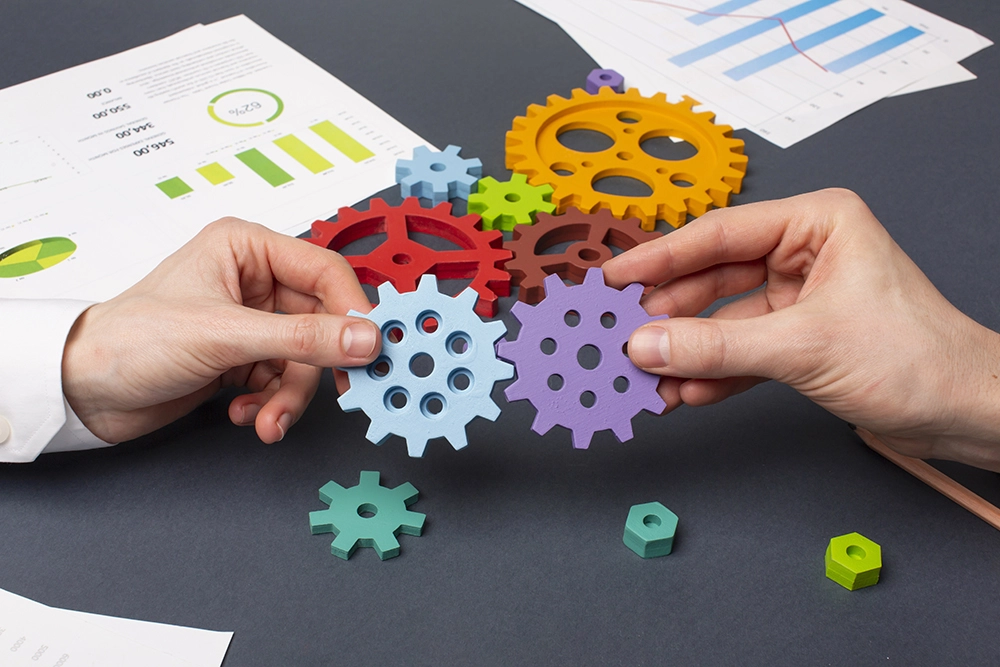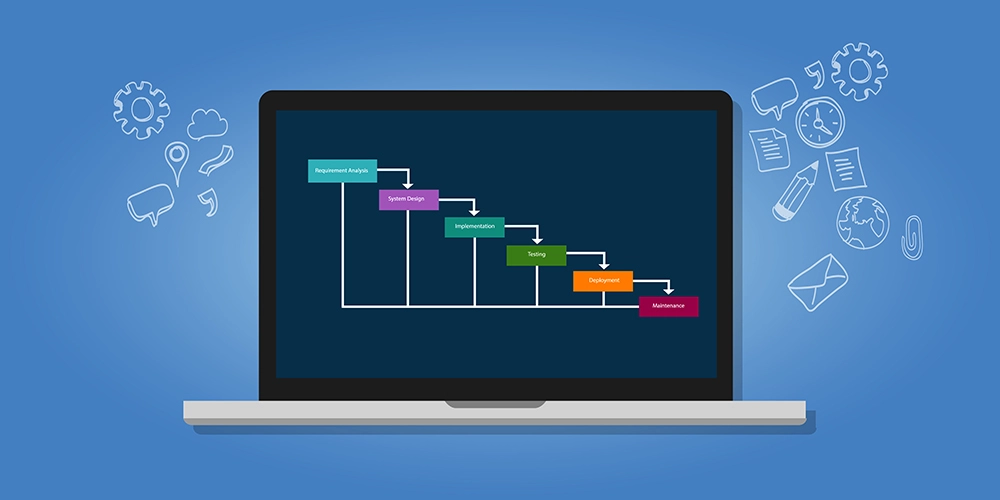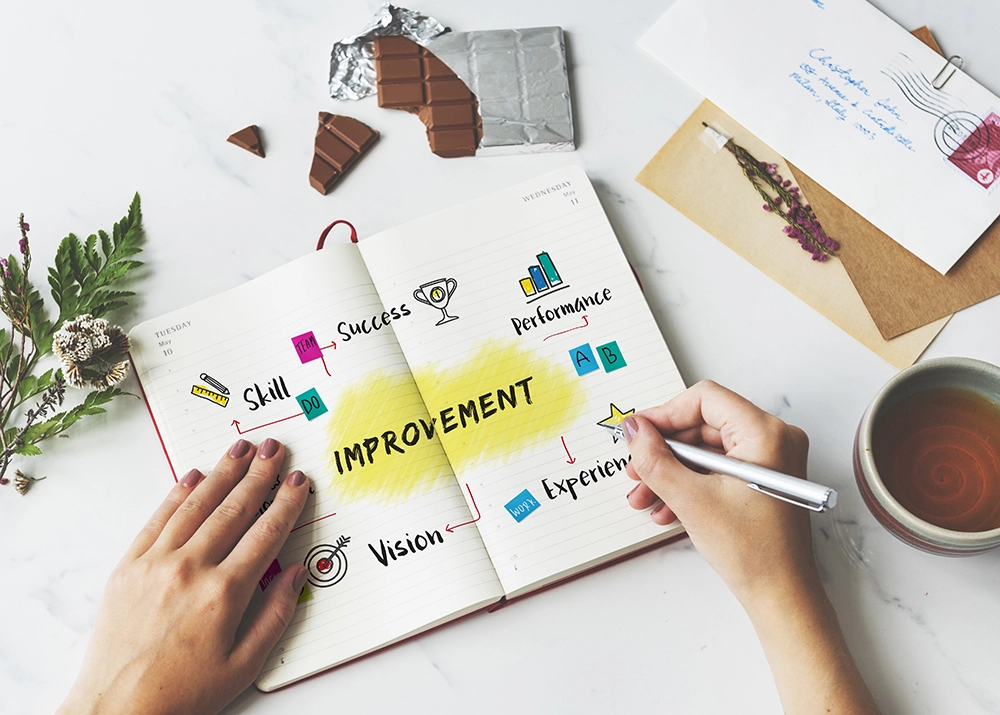
Refers to the structured process or approach used to design, create, test, and deliver software systems. It comprises of the principles, frameworks and practices that guide the development team throughout the lifecycle of the project. They focus on how the software is developed, emphasizing aspects like iteration, team collaboration, and quality assurance. At SmartRabbitz, we have found out that there’s no single approach that always works best, and we use some combination of development methodologies based on the requirements
Aim to improve the development process.
Encompass the entire development lifecycle.
Affect the internal team and project management.

When we work with legacy systems, we use this traditional model, which has a cascading approach to delivery. Teams work through the following stages when using the waterfall model. Each stage is incorporated with gateway approvals to ensure all requirements are met:

In most projects, where the demand for faster software releases outweigh many other factors, we follow this model. It enables us deliver solutions quickly to our clients. Agile and Waterfall has similarities, but never the same. The main difference is that cross- functional teams are pulled together and asked to iterate fast for delivering solutions. This makes it easier for our team to ‘sprint’ and deliver working code over a two-week cycle. The agile method is also associated with additional, related models and methodologies, such as DevOps, CD/CI (continuous delivery and continuous integration), kanban, and scrum

We follow this model while dealing with projects related to mobile apps, AI solutions, VR systems, and such. In a digital age, powered by apps and services, many a time, there is a need to scale up to support millions and even billions of users. These solutions need continuous delivery of new features, which us supported by DevOps, that is also Agile.
MS Office and Gmail are examples of DevOps in action, with multiple updates on a daily basis. The creed is o DevOps model is ‘continuous delivery’. The key to its success is that at every step, your code, and the entire solution goes through iterative testing.

On the technical side, this model is aligned with building the code pipeline using tools (Git, GitHub etcetera) to make sure project is always in a deployable state. As the team delivers continuously, changes are small, segregated, and pose less risk in case of failure. Problems are also easily identifiable and fixable without impacting complete product/project life-cycle

This is the process of breaking large projects into smaller units that can be released to customer sooner and faster. These smaller units are often referred to as PSPIs (Potentially Shippable Product Increments). Doing this will provide early customer feedback that will help in optimizing the delivery process and achieve
better results. There wouldn’t be a need for any specialized tools but would need to adopt changes in how you plan your project using three objectives:
In decomposing new features into incremental deliveries that provide value for the customer.
Incremental deliveries to be based on feedback received from the customer by not just gathering feedback but also by acting on it.
After delivering/shipping customer value, follow through the delivery to create a desired product, by basing further deliveries on real user needs.

It is a modern software development and devops practice we follow for gradually rolling out new features in order to limit the potential negative impact and gauge the user engagement with new product features. For example, first, the changes are rolled out to a miniscule percentage of users and then progressively are released to more users before delivery. It is built on the foundation laid by continuous delivery model. The two complimenting factors of progressive delivery are environments and users. In the case of environments, a user can deliver progressively into environments using blue-green deployments, canary builds, or service mesh. When it is done for the users, it limits the volume of changes being exposed to the users. At each stage of delivery, the health of the application is measured and the metrics are maintained. If anything goes wrong, the application is automatically rolled back to its previous stable state. The four building blocks of progressive delivery are:

The Spiral model is an iterative software development approach that blends risk management and flexibility. It categorizes the projects into smaller spirals or cycles, including project planning, software engineering, risk analysis, and evaluation. The clients can plan to hire developers based on the exact number of development cycles or phases required to create a product. The advantages include efficient process automation, risk management, and enhanced customer satisfaction, and much more. It is best suited for big projects and tasks with high uncertainties.